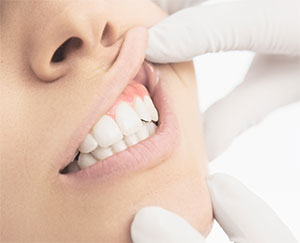DENTISTS globally have for decades been emphasising the vital role played by print communication in the fight to minimise dental caries and gum disease. The American Dental Association, of which this author is a member, currently distributes millions of pamphlets as part of an international oral health education programme. Extracts of one of these pamphlets constitute this article.
Now, 98 out of 100 Guyanese can read and understand this newspaper. We should be proud of this fact especially when we consider that we are more functionally literate than the majority of the world’s nations including Brazil and the United States. But despite this fact, we have not been taking full advantage of our fortuitous situation generally as regards health guidance and particularly, oral health education.
 Daily brushing and cleaning between teeth are important to your dental health because they remove plaque. Plaque is a thin, colourless, sticky film that constantly forms on your teeth. When you eat foods containing sugars and starches, the bacteria in plaque produce acids that attack tooth enamel. The stickiness of the plaque keeps these acids in contact with the teeth. After many such attacks, the enamel breaks down and a cavity forms.
Daily brushing and cleaning between teeth are important to your dental health because they remove plaque. Plaque is a thin, colourless, sticky film that constantly forms on your teeth. When you eat foods containing sugars and starches, the bacteria in plaque produce acids that attack tooth enamel. The stickiness of the plaque keeps these acids in contact with the teeth. After many such attacks, the enamel breaks down and a cavity forms.
If plaque is not removed with daily brushing, it eventually hardens into calculus (tartar). As calculus forms near the gum line, gums can become irritated and inflamed. They become swollen and may bleed. The gums begin to pull away from the teeth and form pockets that usually become infected. If gum disease is not treated properly, the bone supporting the teeth is destroyed and healthy teeth may be involved.
It may surprise you to know that 50 percent of adults over the age of 18 and 75 per cent of adults over the age of 35 have some degree of gum disease. It is never too early to start fighting back. Your dental team can remove calculus from your teeth and treat gum disease that has already appeared. But daily dental care is in your hands. Brushing removes plaque and food particles from the inner, outer and biting surfaces of your teeth. Several different methods are acceptable. One acceptable method for removing plaque is as follows.
Place the brush at an angled position to the gums. Gently move the brush back and forth in short (half a tooth-wide) strokes. Brush the inner tooth surfaces followed by the chewing surfaces. Use the ‘toe’ of the brush for the inner front tooth surfaces. Do not forget the posterior faces of the last molars. Finally, brush your tongue.
For general use, select a brush with soft, end-rounded or polished bristles. The size and shape of your toothbrush should allow you to reach every tooth. Worn-out toothbrushes cannot properly clean your teeth and may injure your gums. Once the bristles start to turn backwards, it is time to change the brush. Usually, this occurs after three to four months of use.
One way to clean between the teeth is with dental floss. Flossing removes plaque and food particles from between teeth and the gum line areas a toothbrush cannot reach. The following suggestions may help to learn about flossing. Break off about eighteen inches and wind most of it around one of your middle fingers. Wind the remaining floss around the same finger of the other hand. This finger will take up the floss as it is used.
Hold the floss tightly between your thumb and first finger with about an inch of floss between them. Use a gentle, “sawing” motion to guide the floss between your teeth. Hold it against your tooth, scraping the other side of it, as you guide it gently beneath the gum line.
If none other is, this article is worth cutting out and keeping for constant reference.




.png)









